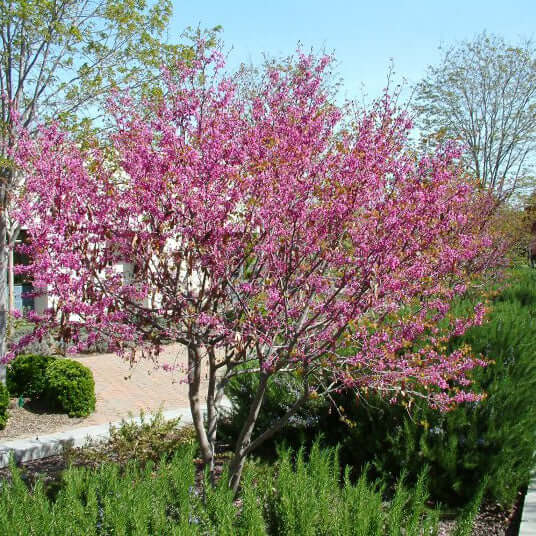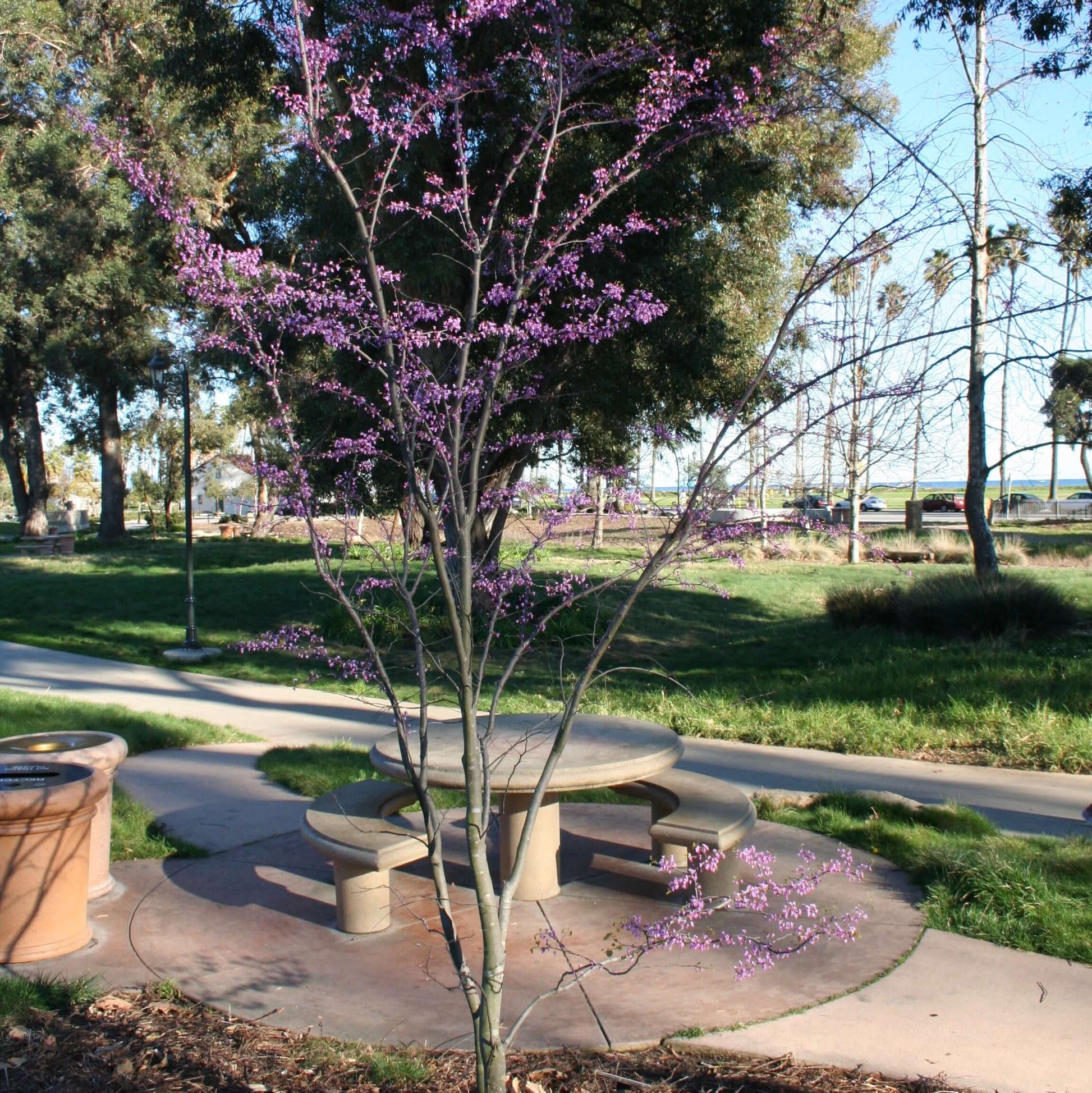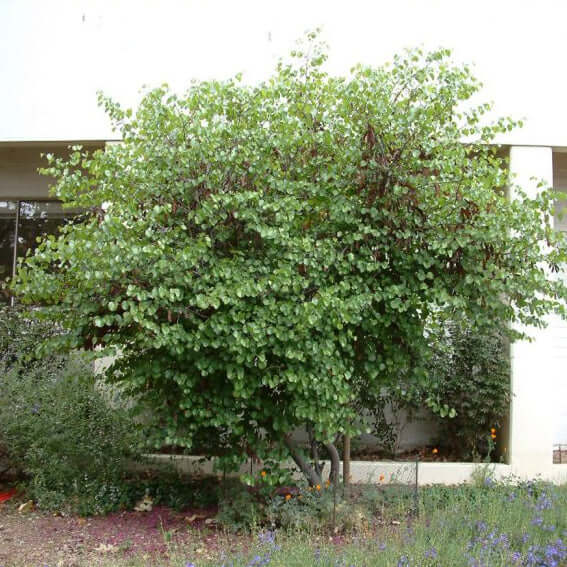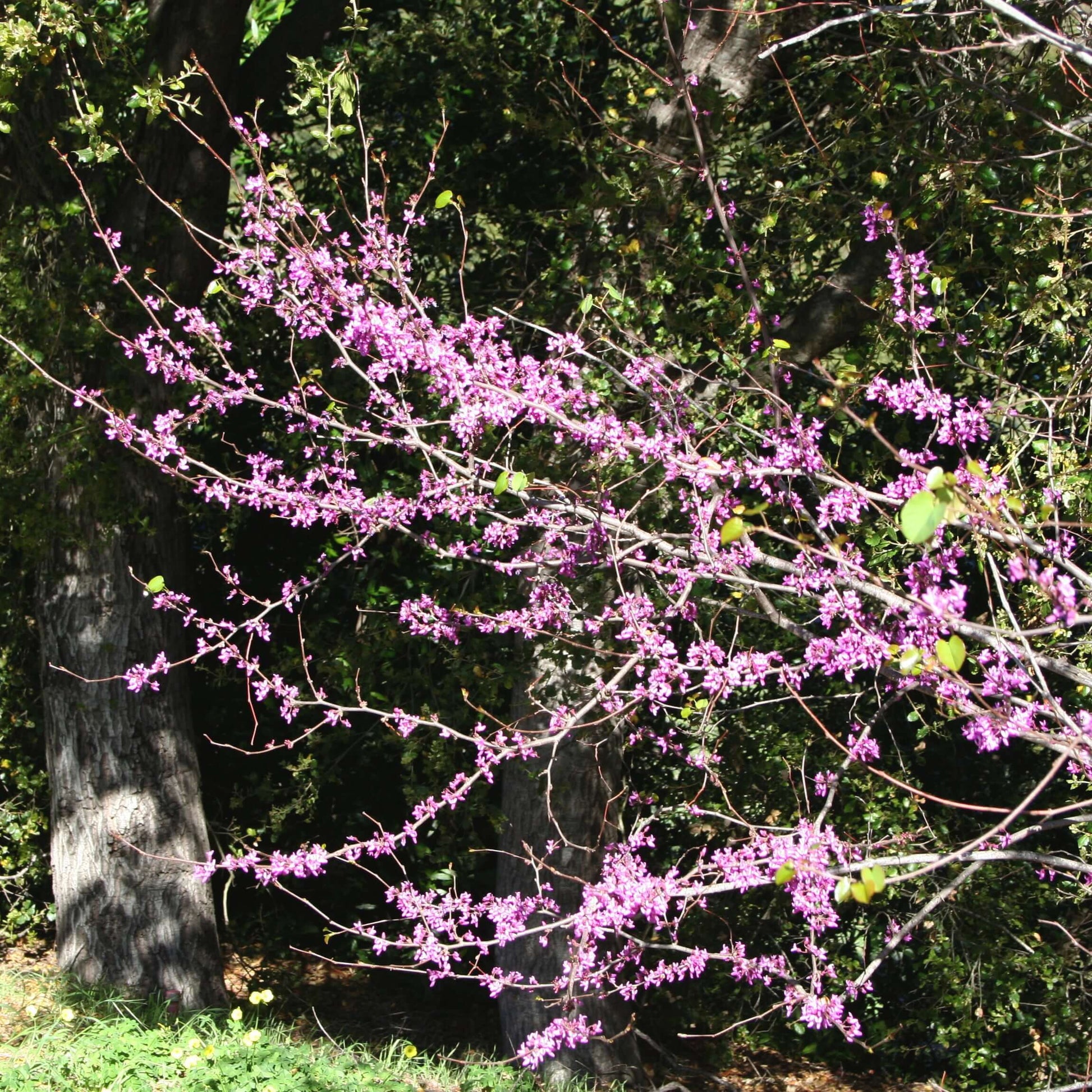
Western Redbud Tree
Cercis occidentalis
Delivery
24-hour money-back guarantee
Free delivery on orders over $349
Big Project? Call 888-444-1126 for bulk rates!
The Western Redbud Tree (Cercis occidentalis), a true California Native Tree, is a slow-growing, small, deciduous flowering tree that showcases a low-branching or multi-trunked appearance.
In early spring, pinkish-red buds burst into vibrant clusters, resembling delicate pink pea flowers that create a stunning display. Heart-shaped green leaves follow the bloom, turning bright yellow in autumn before gracefully falling to the ground. While the Western Redbud grows more slowly and remains shorter than its Eastern counterpart (C. canadensis), it is notably more tolerant of heat and drought, making it a resilient choice for various landscapes.
Naturally found near seasonal streams or on dry slopes in California's foothills and mountains, the Western Redbud attracts wildlife, benefiting birds, bees, butterflies, and other pollinators.
Cercis trees are deciduous, meaning they lose their leaves in the winter. In the fall, their leaves typically change color, often turning shades of yellow before falling off as the tree prepares for dormancy during the colder months. This is a natural adaptation to help the tree conserve energy when conditions are less favorable for growth. Learn more.
Natural Form: The natural form of a tree refers to its typical growth habit and structure when left unpruned and allowed to grow freely. For the Western Redbud, this means a broad, open crown with low, spreading branches and a multi-trunk structure.
How big does a Western Redbud Tree grow?
When does the Western Redbud Tree bloom?
Is the Western Redbud Tree drought-tolerant?
How much sunlight does the Western Redbud Tree need?
6-15 ft.
10-15 ft.
Occasional
Hummingbirds, Birds, Bees, Pollinators
Perfect Your Landscape With Expert Help
Customize your yard with confidence. Schedule your free consultation today and bring your outdoor space to life!




